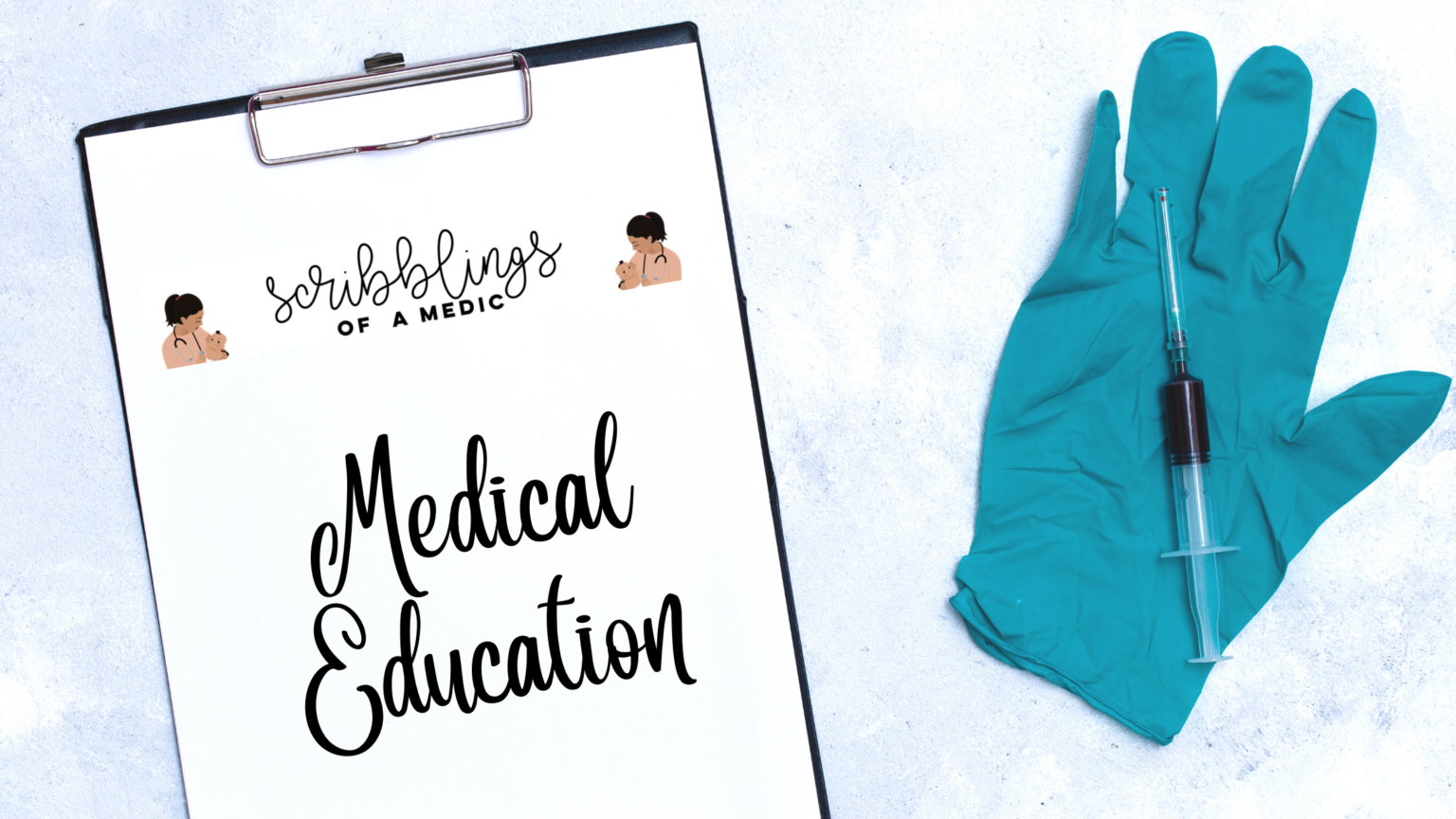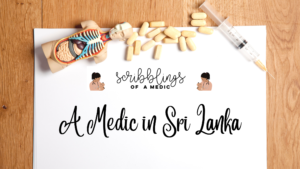Breast cancer is one of the commonest cancers affecting women all over the world. In the UK, 1 in 9 women will be diagnosed with the disease whilst in Sri Lanka, breast cancer accounted for 27% of all newly diagnosed cancers amongst women in Sri Lanka [1]. Breast cancer can also develop in men, but is much rarer. It is important to always promote breast self examination monthly amongst your female circle and mammography in women over the age of 40 years.
Breast lumps are also easy exam stations for both medical students and examiners alike as it is easy to find patients with breast lumps (both benign and malignant), and if you remember the sequence of examination, it is very easy to score high marks. Not to mention that the differential diagnoses are very limited for breast lumps so it is definitely easy scoring.
So what happened?
A 68 year old lady presented with a lump on her right breast that was found incidentally whilst showering. She had never felt any previous breast lumps, and had not realized any skin or nipple changes on either breasts.
On consultation, the lump had only been noticed a couple of days prior and was not tender on palpation. She had immediately checked her other breast, but could not feel any other lumps. She did not notice any skin changes or complain of any nipple changes or discharge.

She had no abdominal pain, shortness of breath, recent onset back of pain or loss of weight (it is important to rule out spread). She has no family history of breast/ovarian/colon cancer, but has not previously had any screening mammograms. She attained menarche at age 14 years, menopause at 51 years and had 4 children (G4P4) who were all breast fed for approximately the first year of their life. She worked as a teacher, but is now retired. She is a non-smoker, and has never been on any hormone treatment.
On examination, a non-tender hard lump of appoximately 3 by 3 cm was found in the upper outer quadrant of the breast. The lump was not mobile as it felt tethered to underlying tissue but not the overlying skin. There was no obvious distortion to the breast shape or symmetry on inspection. There were no skin (dimpling/p’eau d’orange) or nipple changes. No axillary or cervical lymphadenopathy was felt. There was no spinal tenderness or abdominal masses/hepatomegaly felt. Lungs were clear on auscultation.
What did we do?
All women who present with a breast lump must undergo a triple assessment which primarily entails:
- History & examination
- Ultrasound scan +/- mammogram (as young women with breast lumps have dense breasts, mammograms are less effective and hence MRI is done)
- FNAC (fine needle aspiration cytology) or core biopsy.
Ultrasound scan found a 2.5 cm by 3.1 cm solid hypoechoic mass in the upper outer quadrant of the right breast with features consistent of malignancy. No other suspicious lesions were found.
The BIRADS system (Breast imaging reporting and data system) is used to report and interpret breast imaging so that there is standardization amongst radiologists. Mammogram showed an irregular mass with spiculated margins in the upper outer quadrant of the right breast with microcalcifications.
At the same time, all routine and pre-operative investigations were done – full blood count, liver function tests, renal function tests (S. Creatinine, S. Electrolytes), PT/INR, ECG and a 2D Echo – all findings were normal. Investigations to assess spread was also done – chest x-ray was clear (no lung metastases), USS abdomen showed no liver metastases and bone scan came back normal (no bone metastases). Ca15-3 is a cancer marker of breast cancer, but is not always done as its’ significance is still questionable.
As the lesion was palpable, a fine needle aspiration cytology was done (as opposed to an image guided core needle biopsy or open biopsy that is done when the lesion in non-palpable). FNAC report categorized the lesion as C4 (suspicious of malignancy).
Management
The patient was then referred to a tertiary centre for further multidisciplinary oncosurgical management of the breast cancer. The most important aspect once breast cancer is diagnosed is to stage the cancer using the TNM staging. Other

TNM staging of breast cancer summary – source https://epomedicine.com/medical-students/tnm-staging-breast-cancer-simplified/
Many treatment modalities exist which include but are not limited to surgery as described above (mastectomy – skin/nipple sparing – nipple sparing has a greater cosmetic appearance, wide-lesion excision), chemoradiotherapy, hormone therapy and then plastic reconstructive surgery. Hormone therapy includes targeting the hormone receptors present in the breast cancer – oestrogen/progesterone/human epidermal growth factor (HER2) – i.e. tamoxifen targets oestrogen receptor positive cancer cells and herceptin/trastumazab is a monoclonal antibody that targets HER2 receptors. Other forms of treatment include aromatase inhibitor blockers which prevents the peripheral conversion of oestrogen (oestrogen increases the spread of breast cancer) and GnRH analogues which reduce the amount of oestrogen produced from the ovaries.
Due to the small tumour size of <4cm, a wide local excision was done where only the breast lump is removed. Sentinal lymph node biopsy (SLNB) was also done during the surgery to assess for nodal metastases – regional lymph node status strongly reflects prognosis and SLNB has less complications than full axillary nodal clearance (lymphoedema, seroma collections and shoulder stiffness are common complications). As there was minimal tissue disturbance with the wide local excision (unlike in mastectomies), there was no need for plastic surgery reconstruction. The histopathology sample was sent for hormone receptor status testing and radiotherapy was given thereafter to reduce the risk of recurrence.
Discussion
Not all breast lumps are cancerous, many lumps are actually benign – such as fibroadenomas in the young and fibrocystic disease in older women.
Breast carcinoma can be “in-situ” meaning the cancer hasn’t spead outside the ducts or lobules, and is only confined to this area – this cancer is known as ductal or lobular carcinoma-in-situ. If the cancer has spread outside into the surrounding breast tissue, then it is known as invasive breast carcinoma. Other types of breast cancer such as inflammatory breast cancer (an aggressive form found in young women commonly) and Paget’s disease of the breast (affecting the nipple of the breast and commonly found in elderly women) can also occur.
Risk factors for breast cancer are most commonly an increase in age (most women are over the age of 50 years), smoking, a family history of breats cancer, nulliparity, early menarche/late menopause, not breast feeding, long-term hormone replacement therapy and radiation exposure. Familial breast cancer is more common in families where certain mutations are present such as BRCA 1/2 and TP53 (LiFraumeni syndrome) mutations. Testing for BRCA1/2 is available in the government healthcare sector in Sri Lanka.
Common signs of breast carcinoma include a lump, changes of breast shape and symmetry, skin changes such as dimpling/thickening/p’eau d’orange or nipple changes such as nipple dishcarge(blood-stained)/inversion, and rarely breast pain.
Prognosis of breast cancer, as with many cancer types, depends on the spread and staging of the primary cancer. Screening has been paramount in reducing the number of cancer deaths in countries which have implemented screening programmes. Sri Lanka at present does not have a nationwide cancer screening programme, but screening is available in the private healthcare sector. Despite this, the National Cancer Control Programme (NCCP) in Sri Lanka has issued guidelines (which are to be updated against by next year) for the “Early detection and management of breast symptoms”. The national recommendation is that all women over the age of 20 years should conduct monthly self breast examinations. In the UK, screening via mammogram is done every 3 years for women from the age of 47 to 73 years. Screening is also done in younger women with known familial gene mutations using MRI scans. According to theNICE guidelines “Early and locally advanced breast cancer: diagnosis and management”, genetic mutation testing is done in all women with breast cancer under the age of 50 year with triple negative hormone receptor status (negative for ER, PR and Her2).

Early detection of any cancer saves lives and hence it is important that women in Sri Lanka take matters into their own hands and self examine their breasts monthly to look for lumps. Spread the word!
References
- “Early and locally advanced breast cancer: diagnosis & prognosis” – NICE guidelines 2018
“Early Detection and Management of Breast Symptoms – National Guideline for
Primary Care Doctors & Family Physicians” – National Cancer Control Programme, Ministry of Health, Sri Lanka





